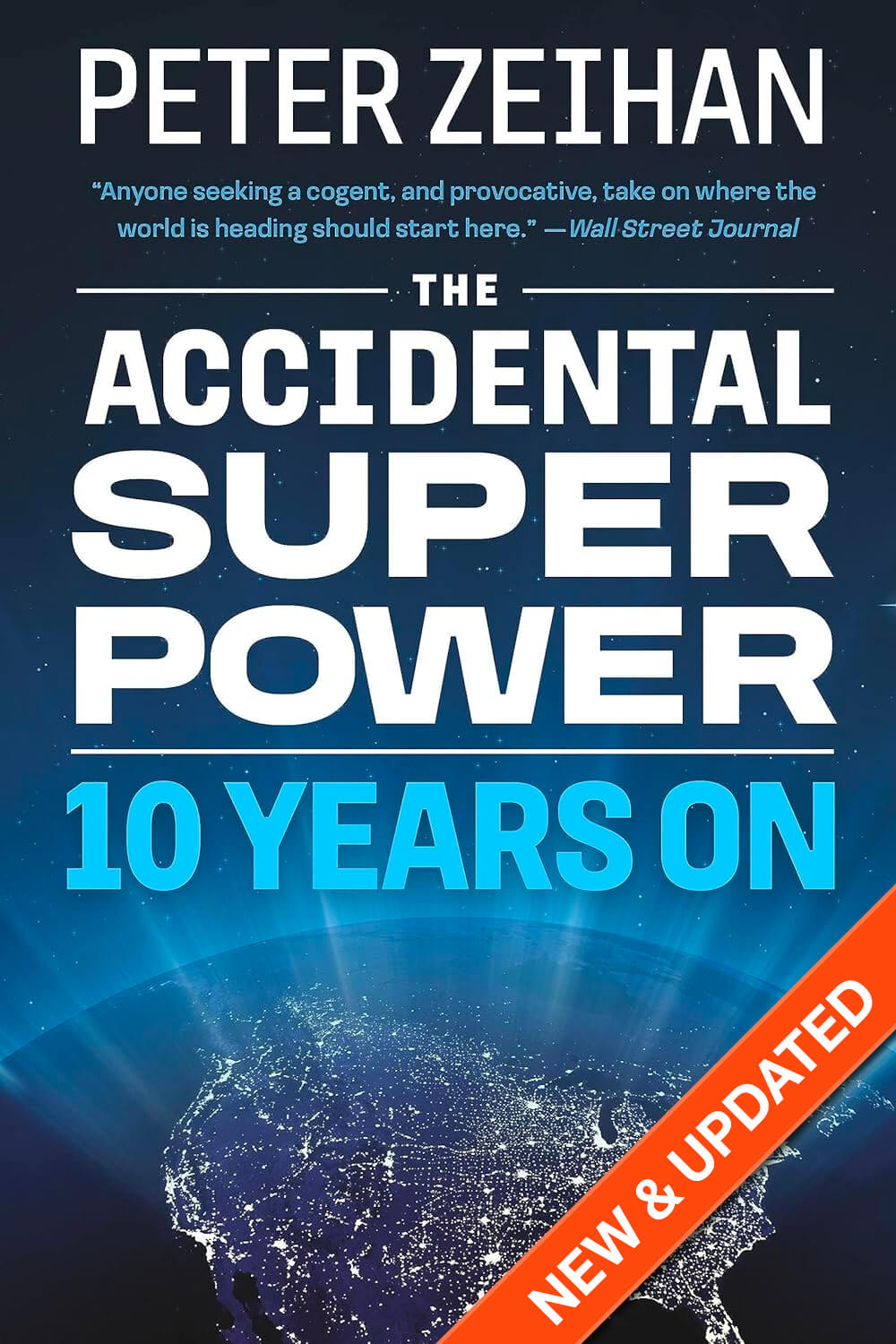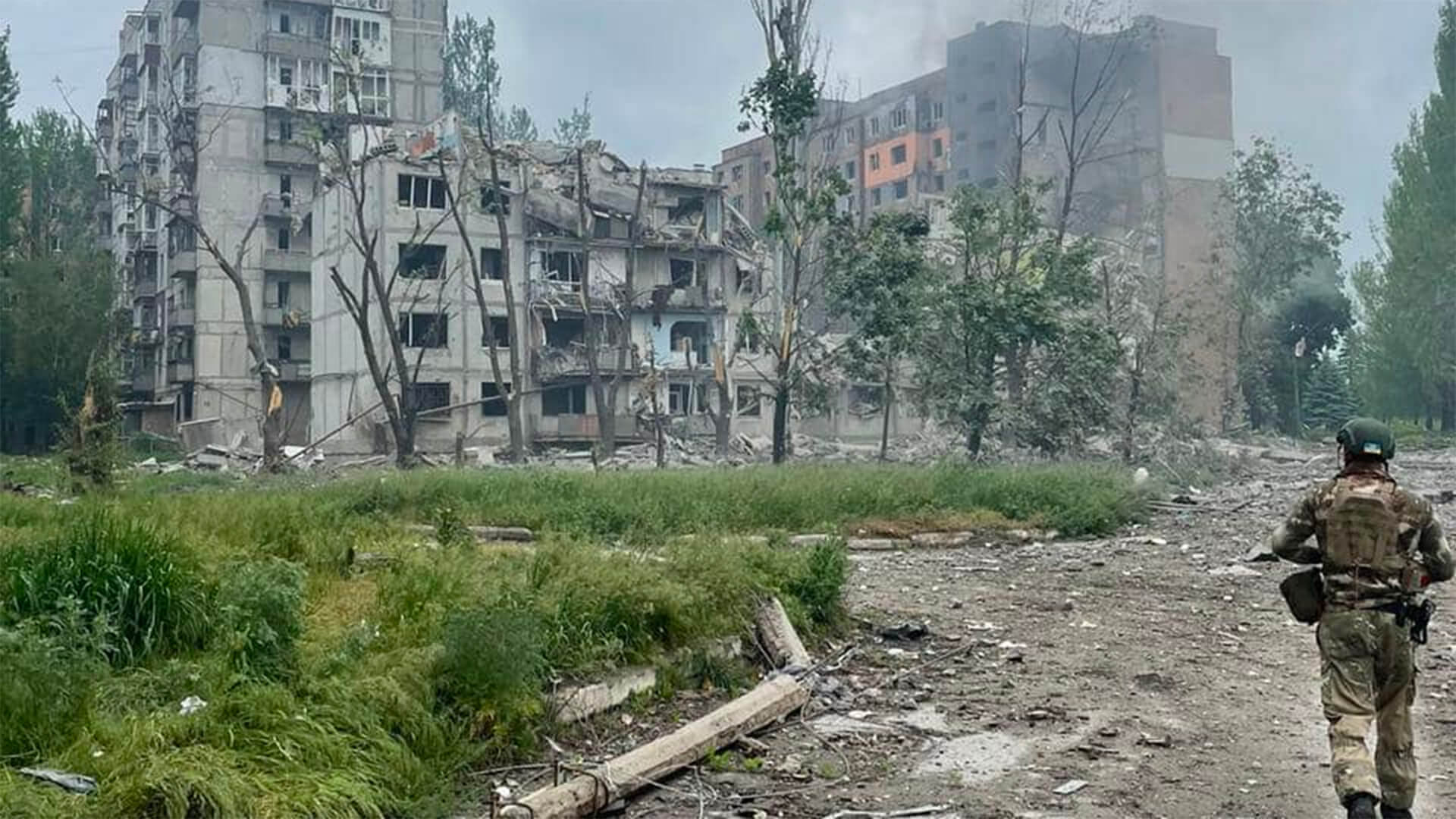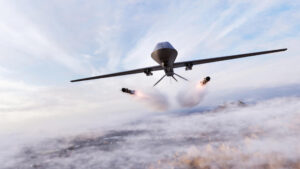
The Accidental Superpower: Ten Years On
With a new “10 years later” epilogue for every chapter, comes an eye-opening assessment of American power and deglobalization in the bestselling tradition of The World is Flat and The Next 100 Years.
Arguably the most brutal battle of the Ukraine War is now in its fourth month: the battle of Avdiivka. Let’s take a deep look at its strategic importance for both sides.
Avdiivka is located in southeastern Ukraine and offers access to vital Ukrainian logistical hubs – so both sides are intent on having control. The Russians have sent waves of troops, tanks and everything else they have into the meatgrinder of Avdiivka, suffering some 40,0000 battle casualties – a ratio of around 5 to 1 compared to the Ukrainian defenders.
As bad as that sounds (and it is, indeed, very bad), in terms of equipment, the Russians are suffering loss ratios twice that. And yet, for the Russians, this isn’t even remotely perceived as a defeat. Russia has always fought its wars as ones of attrition. For Moscow, there’s nothing new here. Russia has more men and gear than Ukraine, and the Kremlin’s bet is that even horrific loss ratios like what’s happening at Avdiivka are still a recipe for ultimate victory.
The Ukrainians need to shift the war to a style that suits their hand – one of movement and logistics, as opposed to sheer volume and numbers. To do this, NATO countries must ramp up materiel production, both for the Ukrainian front as well as for their own needs; otherwise, flows will stop and/or NATO’s capacity to defend itself will thin.
Here at Zeihan On Geopolitics we select a single charity to sponsor. We have two criteria:
First, we look across the world and use our skill sets to identify where the needs are most acute. Second, we look for an institution with preexisting networks for both materials gathering and aid distribution. That way we know every cent of our donation is not simply going directly to where help is needed most, but our donations serve as a force multiplier for a system already in existence. Then we give what we can.
Today, our chosen charity is a group called Medshare, which provides emergency medical services to communities in need, with a very heavy emphasis on locations facing acute crises. Medshare operates right in the thick of it. Until future notice, every cent we earn from every book we sell in every format through every retailer is going to Medshare’s Ukraine fund.
And then there’s you.
Our newsletters and videologues are not only free, they will always be free. We also will never share your contact information with anyone. All we ask is that if you find one of our releases in any way useful, that you make a donation to Medshare. Over one third of Ukraine’s pre-war population has either been forced from their homes, kidnapped and shipped to Russia, or is trying to survive in occupied lands. This is our way to help who we can. Please, join us.
TranscripT
Hey everybody. Peter Zeihan here coming to you from Colorado. I’ve had a lot of people write in with questions about what’s going on in the Ukraine front, specifically what’s going on, and the battle of DPKO. This is a battle that’s been churning for a few months already, and it’s happened in a series of very discrete phases. Basically, this is a spot in southeastern Ukraine that the Russians are trying to capture from Ukraine, and it has some significant strategic implications.
If the if the Russians were able to capture it, they would be able to target a number of logistical hubs that the Ukrainians have been using very heavily in their counter offensives. So it’s not a nothing battle. It’s not an ego battle like we saw in Borehamwood last year with Russian mercenaries. This is this is a real fight.
And it’s it’s a bloody one. It’s happened in a number of phases. First, the Russians tried to use tanks to capture it. Then they sent human waves in which, you know, did as well against in place machine guns as it did back in World War One. In World War two. When that didn’t work, they sent hundreds of drones.
And now they’re trying these kind of combined armored infantry thrusts, lots of bodies. It has been the only place that the Russians have been attacking and reading between the lines of both Russian and government statements and private statements on both sides, as well as third party estimates, whether it’s from Turkey, China or Britain. It looks like the Ukrainians have been inflicting a 5 to 1 casualty ratio upon the Russians, which is just, you know, horrific.
But in terms of equipment, in terms of like tanks and APCs, it’s more like 10 to 1. Now, from the Russian point of view, this is not necessarily a disaster. This is kind of par for the course, not in terms of the numbers, but just kind of the impact of it. Ever since the Russians failed with that initial thunder run to Kiev at the beginning of the war.
The Russians have always known that this was going to be a battle of attrition for public support, for numbers of troops, for amount of equipment, and in that they definitely have the advantage, even giving the Ukrainians the most positive spin. Ukraine has less than one third the population of Russia and less than one eighth of the industrial plant.
And in terms of the order of battle that was inherited from the Soviet Union, it’s more like a 30 to 1 ratio. Russia was the primary successor state, and they got all the good stuff, so to speak. And so in any battle of numbers, the Ukrainians are going to have a very, very steep road to hoe here. But from the Russian point of view, this is kind of built in Russia is in control of information space.
So you don’t necessarily have to worry about public uprisings until you know, until you do. But we’re not there yet. And that means they can just keep pulling tanks out to refurbish them and sending them to the front without having to necessarily spin up their own military industrial plant to make new tanks. And they’re doing that, too. Now, there’s certainly burning through them five, ten times as fast as they can bring them online.
But they’re starting from a deep well of something like 16, 18,000 tanks at the beginning of the war. They’ve lost less than 2000 at this point. So they can keep this going for a very long time. In addition, the Russians have never, ever, ever claim to be the technological superpower in any age. They have always fought on the numbers and it has done them well against the against the Nazis.
There were oftentimes battles where they suffered four and five times as many casualties that they still won in the end, because they ultimately just had a much deeper bench of people. And so they’ve never focused on quality over quantity, because, as Stalin said, quantity is a quality all its own. And they’ve known this from the beginning. So when they see the bad numbers rolling in from places like a DEFCON, it’s kind of a shrug and they’re just, you know, throw in some more meat to the grinder.
It doesn’t mean there aren’t challenges, it doesn’t mean there aren’t complications. And this is absolutely why the Ukrainians are trying to turn this into a war of movement. In a war of logistics. But from the Russians point of view, this is a very comfortable place to fight a war, even with these sort of horrific numbers. The difference this time around, of course, is that this is the last time they can do this.
The bottom fell out of the Russian birthrate back in the 1990s, which means it’s already been 25 years since a large crop of people were born. And so they’re running out of people in their twenties. They started this war without 8 million men in the Russian started this war was about 8 million men in their twenties. 1 million have already been killed or removed from active combat roles because of injuries and another million have fled the country.
So at current pace, the Russians can maintain this for another four or five years, both in terms of equipment and manpower. And that’s when things get sketchy, whether or not Ukraine can last that long. You know, we’ll see. It does mean, however, that this is the last war that the Russians can fight of this scale. There’s just isn’t a replacement generation.
Now, whether this is good or bad for the Ukrainians, of course, depends upon how you want to look at the situation. The Ukrainians certainly don’t have as many men. They absolutely don’t have as much equipment. They’re absolutely dependent upon third countries, like most of the NATO forces, to supply them with the hardware that they need in a war of attrition.
That’s kind of a problem because NATO’s wasn’t designed to fight a war of attrition. It was designed to hold the line against the Soviets for just long enough for the Americans with their technological superiority to cross the Atlantic in force. Well, Ukraine’s not a NATO country, and so we’re nearing the bottom of the barrel for a lot of the tertiary countries across the Native Alliance.
And the Germans never had anything. So we’re starting to get into the stuff that really, really matters in a lot of these secondary countries like Poland or France and very soon, if NATO’s doesn’t like massively spin up their military industrial complex themselves, they’re going to have a choice between denuding their own stockpiles or supplying the Ukrainians, but probably settle for some version of both.
But again, as long as the Russians are fighting a war of attrition that they’re comfortable with, that’s a bit of a problem. But the real issue is the numbers. We talk about the thunder runs of the Russians going down to Kiev fairly, but what we’ve forgotten is that after a couple of amazing successes that Ukrainians had last year, the Ukrainians have not been able to return the favor.
If the Ukrainians cannot turn this into a war of movement and logistics, then it is by default a war of attrition. And if this is a war of attrition, that of DPKO is about the minimum level of success that the Ukrainians need to achieve. Five times as many men, ten times as much equipment they need to do that a hundred more times to defeat the Russians in a war of attrition.
And that is a extremely tall order.








